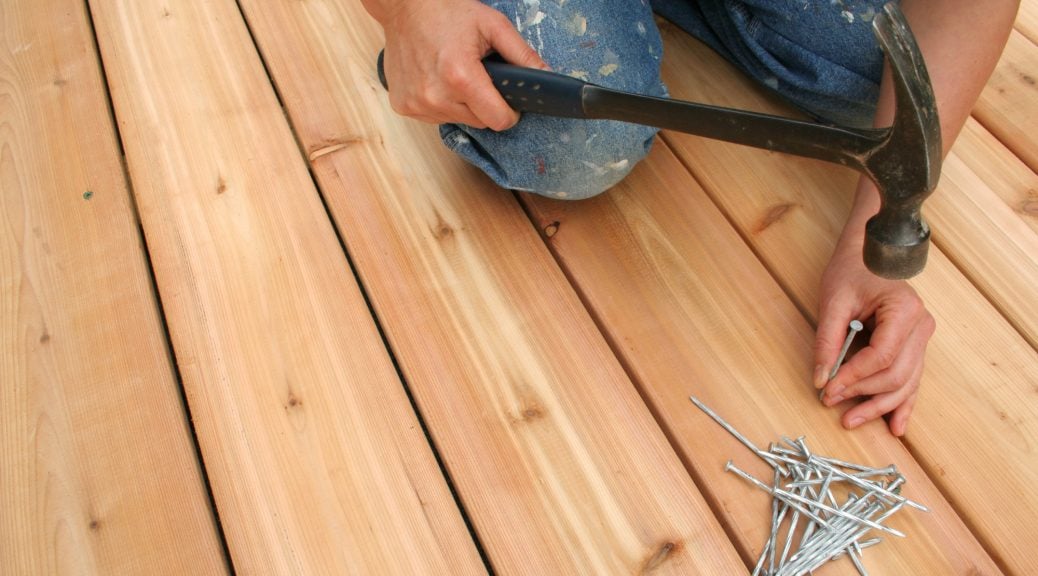Did you know that adding decking to your house could be 80% cheaper than you think?
Houses that have good quality decking installed often rise in value up to 80% of the cost of the decking.
Of course, that is only installing the basic wood structure. After you install other items such as outdoor furniture its appeal rises further.
You may want to make your house look even better, but have never installed decking before. If you want to ensure that you are investing well, what should you look out for?
Check out our list of 5 tips on how to build a deck.
1. Choose Your Design Carefully
Experts say that you should not build decking that is 20% of your house’s square footage.
If you decide to go with this, you will need to plan carefully how you use each square foot. Will you use your decking area mostly for ornaments, or will you host garden parties?
Some add to the beauty of their decking by building more than one level. Perhaps they have the main seating area and a smaller area that is lower and tapers down to a yard.
When designing your deck, plan for your decking to be a few inches below door level. In winter leaves may pile up against the base of the door and, if the same level, the out-swinging storm door will push them into the decking.
This is not only ugly but can cause damage in the long term. Leaving this gap will also keep leaves out of the house.
2. Think in 3-D
If you are building substantial decking, you likely have favorable weather and want to sit outside and enjoy it. To shield you from unwanted sunlight you have a range of options.
If you want to read in peace, you can go with a pergola and sun rays that creep through the wooden slats. To stay out of the sun completely, install an awning.
Once you have shade in place, and a superstructure to hang things from, only your budget limits what you can do.
Elaborate lighting systems, heating systems to allow you to enjoy the decking all year round, TVs, audio systems, Barbeques – the list is endless.
3. Choose Quality Materials
Depending on the weather where you live, your decking may take a pounding. Direct sustained sunlight in summer, followed by lashing rain in winter means you need to pick enduring materials if you do not want to replace timbers each year.
You have a choice between natural wood and composite boards.
Natural Woods
Natural woods such as Redwoods and Red Cedar are historically the most popular choice for checking materials. They are naturally resistant to decay, insects, and rot.
There are many other natural wood solutions available at a lower price to artificial solutions. However, it is true that they will show their age with just a few years.
Artificial Solutions
Before you discount the non-natural materials, think of what they can offer you.
Composite boards are a blend of recycled plastic and wood. This gives them incredible durability. They often come with a warranty of up to 25 years.
Since they have a plastic coating their finish is also guaranteed and will not significantly fade during this time. In fact, the time saved by not needing to maintain composite often persuades people to spend the extra money needed to purchase it.
The appearance of the composite boards is engineered to look exactly like genuine wood and people often find it difficult to distinguish between them.
4. Choose Your Fixtures Carefully
Even if you go for a long-lasting wood decking solution, this could still be undermined if you choose the wrong fittings. Choosing screws and other fixtures will damage the wood surrounds.
Choosing fixtures that will rust quickly will mean you have to take up the boards to replace the fixtures even though the wood may be fine.
If you plan to use stainless steel nails or screws, we recommend 305-grade stainless steel or higher. A lower grade may discolor the wood surrounding it.
A safe solution is the CAMO® Hidden Clip System. Rather than driving the screw into your decking panels, this system uses an unseen clip that sits in-between the panels. This houses the screw and protects the wood from discoloration.
5. Choose the Right Finish
When your decking is in place you are ready to apply the finish. You basically have three options:
- Paint
- Stain
- No finish
Painting
Painting a new wooden deck may seem unorthodox, but it does have its advantages. Depending on the color that you choose, you may not have to clean it as often as other finishes.
A good quality paints job is easier to clean by simple washing. It is hardwearing and will not fade easily.
However, this is also a negative. Paint is very hardwearing. This means that one you have painted your decking, there is little chance of successfully going back to a natural wood look.
Staining
Staining allows you to retain the natural beauty of the wood. If your wood has a naturally beautiful grain pattern, you may even be able to accentuate it with the right stain.
The downside is that stain is less hardwearing than paint. Depending on the quality of the stain that is applied and the number of coats, it may not last many years. Particularly in areas of high traffic will it age more quickly.
No Finish
This is a surprisingly good option. Not only are you able to make immediate use of your decking, with correct maintenance and cleaning, the wood can also last for decades.
If you took the option to use Redwoods and Red Cedar, you may be able to leave the surface of the wood completely untouched thanks to its natural resistance to bugs and decay.
Of course, over time this type of wood will discolor, however, unless it is under very severe weather conditions it will not change in any way other than appearance.
How to Build a Deck and Many Other Projects
These are the top tips on the subject of how to build a deck.
If you are planning to add a deck or any outdoor timber to your house, why not check out our blog to see what practical advice we have to offer?
Make sure to contact us today for a quote on the best wood you can buy!

